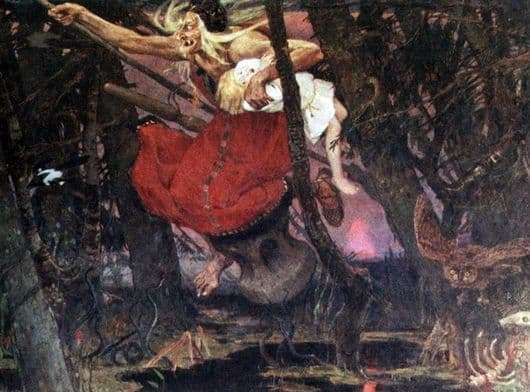
Bilibin illustrated fairy tales written by the Russian people. All of us have known Baba Yaga since childhood. She lived in an unusual hut that stood on chicken legs. Usually she lay on the stove or shop. Yaga moved with the help of a stupa and a broomstick.
Bilibin created a huge number of illustrations for the fairy tales we all loved. We see Baba Yaga. She comfortably settled in such an unusual vehicle as a stupa. On the dress you can see the patch.
The artist was able to create a twofold image. The appearance of Baba Yaga is not able to scare. Her view just pushes away. Long nose, small eyes, unhealthy skin color. Painting Bilibin even causes some pity. Before us is frankly an ugly woman who is absolutely lonely.
Baba Yaga’s hair is like tow, which has not been combed for a long time. They show us how fast the stupa flies (fluttering in the wind). Sedin speaks of wisdom. That is why this old woman always helps the heroes to find their beloveds.
Heroine flies through the old forest. Spruce trees are everywhere, mosses and lichens are seen, dry birch trees stand and are looking through the grass toadstools. Before us is the real Baba Yaga, which we present after reading fairy tales.
If we talk about flowers, then khaki and brown prevail. This color stupa, bark, skin of the heroine and her hands. The night will come very soon, so the brightness of the colors is deliberately muted. There are only a few bright spots – the outfit of the heroine and mushroom.
Stupa flies almost over the grass itself. This suggests that the beliefs of the people were mundane.
The image that Bilibin has managed to create is symbolic. In particular, the broom in her hand says a lot. It was with this subject that many beliefs of the people were associated.
The picture seems voluminous. We seem to be transferred to a fairy tale.
Description of the illustration by Ivan Bilibin “Baba Yaga”







